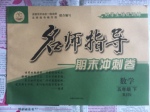题目内容
Water costs money.In some places water is hard 31 .What 32 when a town has these problems?A small town in California found a happy 33 .
Very 34 rain ever fell there.The town had no water35 .The water it used was 36 from a river 300 miles away.As more people 37 live in the town 38 water was needed.Now water 39 to be brought in from 600 miles away.All these cost 40 money.
The town 41 a plan.It found 42 to clean its “dirty” water.Once the cleaned water was reused 43 many ways.Five 44 lakes were built.Here people could swim and fish and go 45 .They 46 have picnics in their new parks.Farmers had more water 47 their crops.New factories can be built,now that they have the promise of 48 .
In most places,water is used and thrown 49.The town that saved 50 water has saved the town!
1.
|
A.supplying |
B.getting |
C.to get |
D.to supply |
2. A.happens B.happening C is happened D.happened
3. A.key B.answer C answering D.way
4.
|
A.little |
B.a little |
C.few |
D.a few |
5. A.of itself B.of its own C.for its own D for itself
6.
|
A.fetch |
B.take |
C.brought in |
D.guided |
7.
|
A.come to |
B.came to |
C.coming to |
D.came for |
8.
|
A.many |
B.plenty of |
C.more |
D.many more |
9.
|
A.has |
B.had |
C.must |
D.needed |
10.
|
A.many |
B.a few |
C.a great many |
D.a lot of |
11.
|
A.put |
B.made |
C.supply |
D.noticed |
12.
|
A.a way |
B.ways |
C.an answer |
D.a key |
13.
|
A.for |
B.by |
C.at |
D.in |
14.
|
A.man-making |
B.man-make |
C.man-made |
D.man made |
15.
|
A.boating |
B.to boat |
C.to boating |
D.on boating |
16.
|
A.must |
B.could |
C.needed |
D.had to |
17.
|
A.as |
B.with |
C.for |
D.to |
18.
|
A.water enough |
B.enough water |
C.crops enough |
D.enough crops |
19.
|
A.off |
B.of |
C.away |
D.out of |
20.
|
A.it’s |
B.its |
C.one’s |
D.his |
1. C
2. A
3. B
4. A
5. B
6. C
7. B
8. C
9. A
10. D
11. B
12. A
13. D
14. C
15. A
16. B
17. C
18. B
19. C
20. B
【解析】
1. 词义和固定搭配。“supply”提供“get”得到 又因为be +adj+to do sth 所以此处应是be hard to do。。。做某事很困难。句意:在一些地方,水很难得到 故选C。
2. what作主语,谓语使用单数形式。此处应用三单形式。整篇文章为现在时,happen为不及物动词,无被动。句意:当一个小镇有这些问题时会发生什么? 故选A。
3. 词义与词性辨析。A关键B回答,答案C回答D方式,上一句是一个问题what happens? 句意:一个加利福尼亚的小镇发现了一个令人愉快的答案。 Answer即可做动词,又可作名词。 故此处选B
4. 考察副词辨析和名词的单复数。A不多B少许C很少,几乎没有D少许,少数 AB均修饰不可数名词 CD修饰可数名词 “rain”雨,为不可数名词。 句意:那里下雨不多。 故选A
5. 考察关于代词的使用。 A它自己 B自己的C它D它是 句意:这个小镇没有自己的水源。故选B
6. 动词词义辨析。A去拿来B拿去C把…拿进来;带进来;收获(庄稼等);赚(钱)D引导 句意:它使用的水是从30英里外的河里来的。 C在此处可引申为“水流过来” 故选C
7. 时态和词组辨析。句意:随着越来越多的人住在这个城镇里。 应用过去时态。 come to live in 过来居住 come for live in 为了居住而来, 表示一种目的,但文中并没有出现关于“目的”来居住,故选B
8. 形容词和上下文辨析。 Water水,为不可数名词。 前文提到“越来越多的人居住在这个城镇”所以此处句意应是:更多的水被需要。 故选C
9. 短语辨析。 AB have to do 不得不做某事 C must to do 必须做某事 need to do 需要做某事 Now表示现在时,故排除B 根据上下文句意:现在,水不得不从600英里以外取来。 故选A
10. 形容词辨析。 A,B,C,D均为许多,大量,不少 但water为不可数名词,而ABC均修饰可数名词。故选D
11. 动词和短语词义辨析。 A put a plan(不存在这个词组)B make a plan 制定计划C supply a plan 提供计划 D notice a plan 注意计划 句意:这个城镇制订了一个计划,故选B
12. 词义辨析。A一个方法B方法C一个答案D一个关键 句意:它发现了一个净化污水的方法。 “way”是可数名词,不能单独使用。故选A
13. 介词词义和短语辨析。A for many ways(不存在这个词组) B by many ways用许多方式C at many ways(不存在这个词组)D in many ways在许多方面 句意:被净化过的水被在许多方面重新使用。 故选D
14. 考察合成词。句意:5个人工湖被开凿。 “湖”是被“人”开凿的,所以make应用被动语态。故选C
15. 固定搭配。 go+doing 去。。。 go on+to do 继续做某事 go to..去某地 句意:人们到这里来钓鱼,划船。故选A
16. 词义和上下文辨析。A必须B可以C需要D不得不 根据上下文:他们可以在新的公园里野餐。故选B
17. 介词词义辨析。A当做B和C给,为了D表引出对象 句意:农民有更多的水给他们的谷物。 For表示把。。。给。。。,故选C
18. 考察名词短语的搭配和词义。 结构:enough+名词 句意:因为有足够多的水。故选B
19. 短语辨析。A throw off 摆脱 B throw of掷,抛出C throw away 丢弃,浪费 D throw out of 轰走,逐出 句意:水被使用,被浪费。故选C
20. 代词辨析。A 它是B 它的 C 某人的 D他的 句意:这个小镇拯救了它的水源,拯救水源也拯救了这个小镇。 故选B
【考点】本文主要涉及重点实词辨析考察,数词考察,介词辨析,第三人称单数,形容词辨析和副词辨析等,当然,关键是上下文的内在逻辑关系。
【点评】
文章主要讲了加利福尼亚的一个小镇缺水,为了生存,他们把污水净化后使用,这使得这个小镇迅速发展。
本文是一篇说明文,难度不大。本文更加注重上下文之间的逻辑关系,通过提出问题,解决问题的写作方法进行阐述,更加关注了句与句之间的前后联系。这就要求同学们在做说明性文体的完型时更应耐心,细心地去理清段与段,句与句之间的关系。在通读的基础上,标出文章的标志词,然后去认真辨析动词,名词等实词的具体意思,同时,对句子结构,常见数次表达做到细致,并不断加强积累。

 名师指导期末冲刺卷系列答案
名师指导期末冲刺卷系列答案 开心蛙口算题卡系列答案
开心蛙口算题卡系列答案 In keeping with its eco-development, the machine uses the same amount of electricity as three lights.
In keeping with its eco-development, the machine uses the same amount of electricity as three lights. r, Canadian Firm Element Four, roughly calculates that a litre of water cost around 20p to produce.
r, Canadian Firm Element Four, roughly calculates that a litre of water cost around 20p to produce.